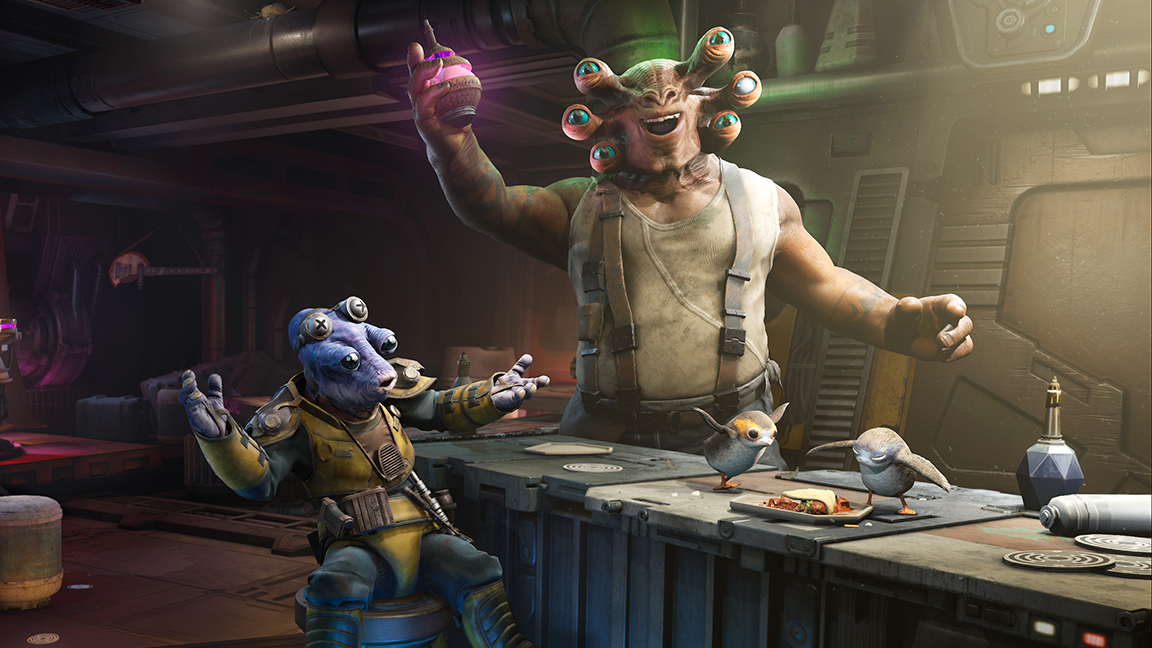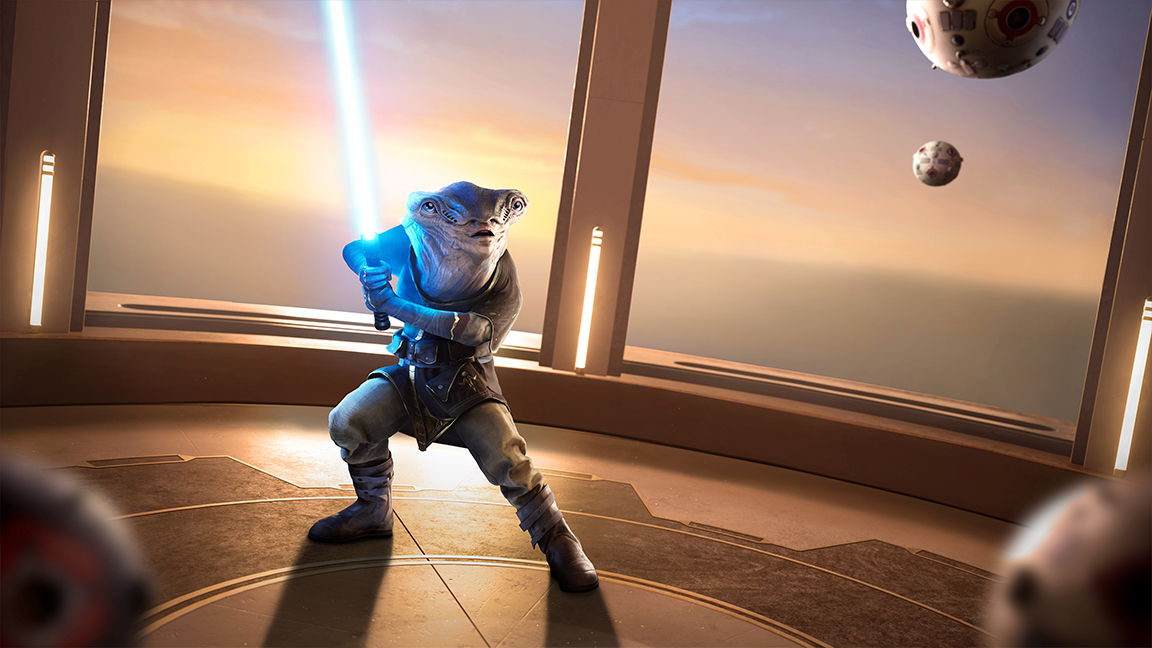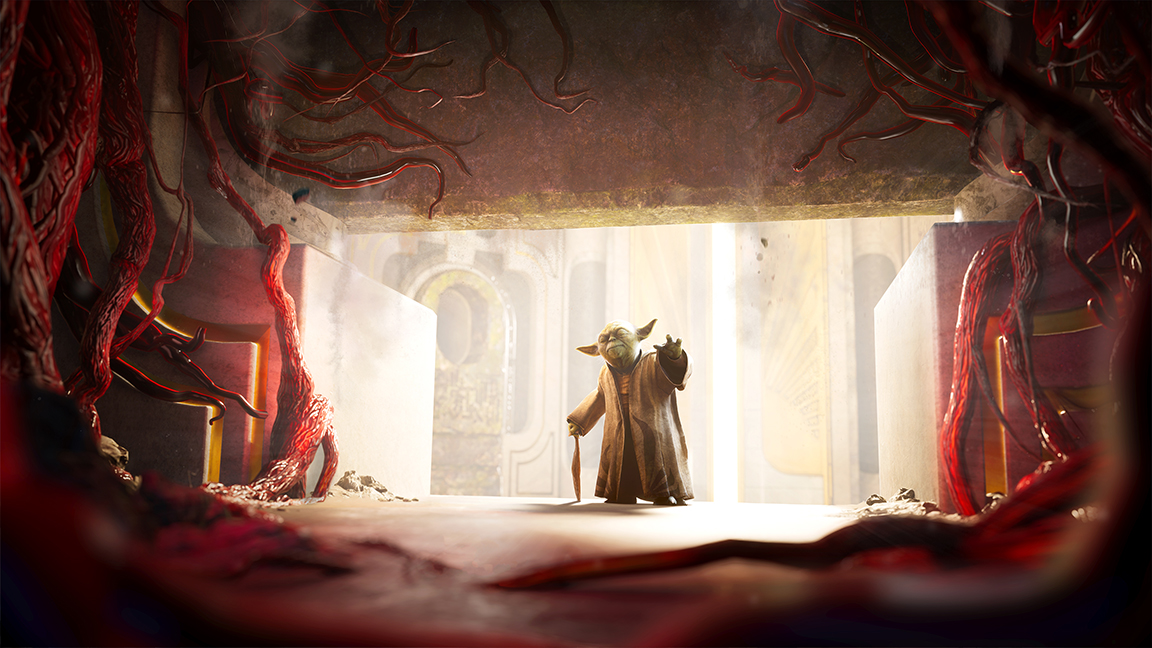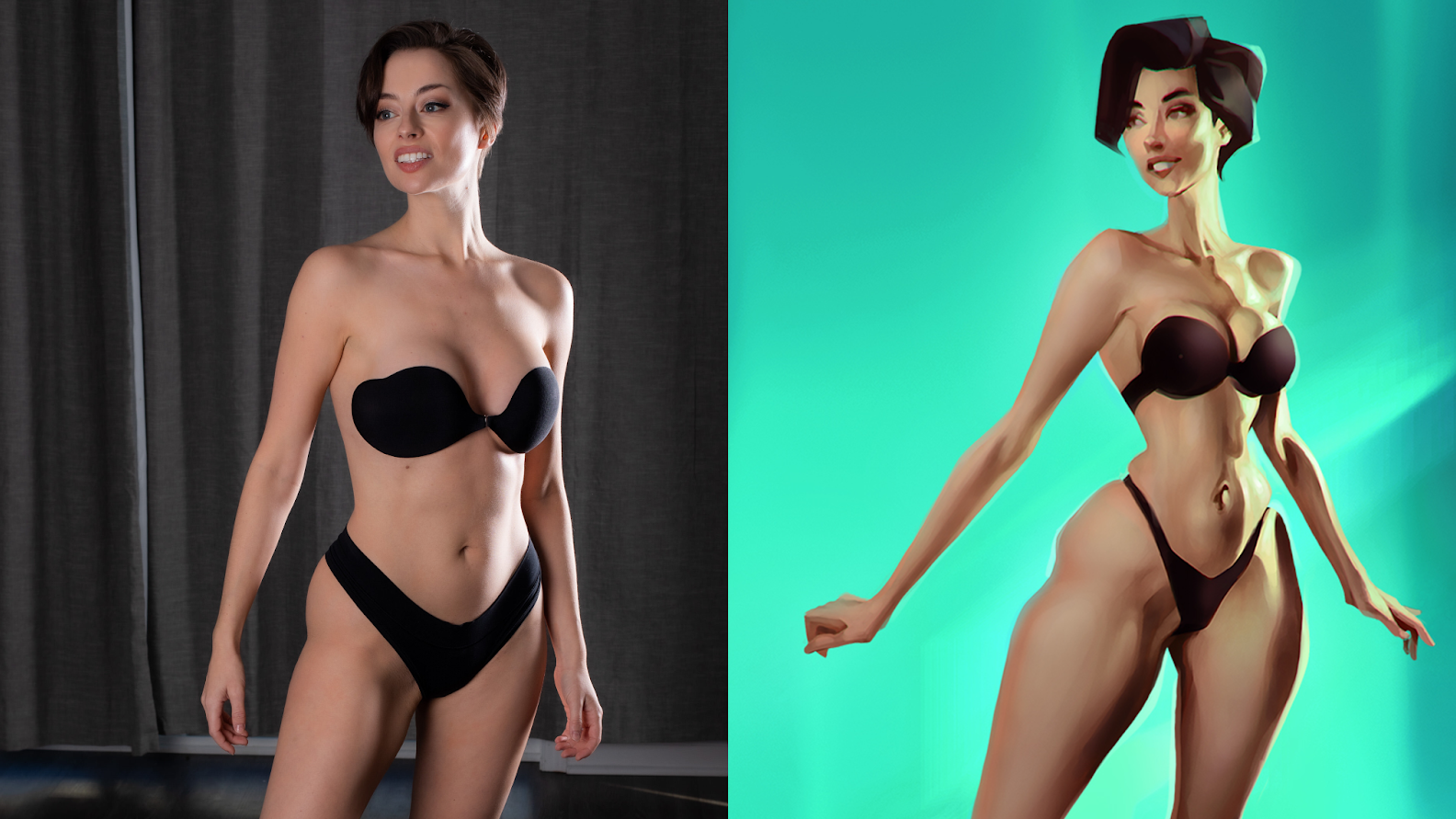
With PSVR 2 launching today, I speak to Jacob Edelen, lead experience designer at ILMxLAB, the developer behind Star Wars: Tales from the Galaxy’s Edge - Enhanced Edition, about creating for Sony's new VR headset and the future of virtual reality.
PlayStation VR 2 is Sony's new, next-gen virtual reality headset designed to work with PlayStation 5 and comes crammed with state-of-the-art technology. You can find our everything you need to know in my guide to PSVR 2 or read my PSVR 2 review for a lowdown on it is to use. Star Wars: Tales From The Galaxy’s Edge - Enhanced Edition is a launch game for PSVR 2 and is one of the best PSVR 2 games.
Below Jacob Edelen goes into some specifics about developing for PSVR 2, but first I ask about the state of VR in general, after all both Apple and Samsung are teasing virtual reality technology.

"We are in a very exciting era of VR," says Edelen. "There have never been more options for players looking to dive in depending on what is important to them. Experiences are becoming fully fledged games and have never looked better."
The designer picks up on the technology inside PSVR 2 that help immerse players in the worlds they will experience, for example the introduction of haptics in PlayStation VR2. "I can see a better focus on these experiences and making them look and feel even better to take players to those worlds they want to see," he says, adding: "We might start to see some genre defining experiences in the near future. I also see a greater focus on how to make players of all types feel more comfortable in VR. As certain challenges are solved, it makes the medium more welcoming to everyone."
So how does and will this new technology affect VR game development? "VR development is really starting to take off and realise some of the promises it makes to players for immersion," he tells me. "You can finally enter these amazing worlds from the comfort of your own living room. I don’t think it’s a gimmick anymore, but a valid way of developing great games."
The release of PSVR 2 as well as Meta Quest 2 and the rumours of Apple VR and Samsung VR headsets could see VR experiences finally take off and become mainstream, with a new emphasis on the art of VR development.
Get the Creative Bloq Newsletter
Daily design news, reviews, how-tos and more, as picked by the editors.
"Game development itself is an art form and VR is no exception," shares Edelen. "I think giving greater freedom and immersion to the player means new challenges to make that experience feel authentic. Finding solutions to these new problems and creating amazing visuals like what can be found in this experience is an art in and of itself."
Read on below as I delve a little deeper into the development process behind Star Wars: Tales From The Galaxy’s Edge - Enhanced Edition with Edelen. The game launches today for PlayStation VR2.
PSVR 2 launch: Q&A with ILMxLAB's Jacob Edelen

What was the most challenging aspect to developing for PS VR2?
The biggest challenge we set for ourselves was to keep the original vision of Star Wars: Tales from the Galaxy’s Edge while taking advantage of the features we had access to with PlayStation VR2. The new capabilities allowed us to push the experience in terms of visual fidelity and new features found in the haptics system.
Whenever you are moving to a new technology, you’ll typically encounter some problems that need to be solved. Rendering can be a big one when you are looking to make realistic environments in VR, and we had to find the limits of what we were working with and then scale everything to create the best experience within those limits.
What are the golden rules of VR game design, and how did you apply them to Tales from the Galaxy's Edge?
There are many, but I think an important one for VR experiences in particular is to make them accessible. Accessibility is often one of our pillars here at ILMxLAB, as we believe that Star Wars is for everyone, and it is a mantra our game director Jose Perez III hammers home often.
When creating experiences like these, making it easier and more comfortable to play is incredibly important. In this experience, we have many options for accessibility. We have subtitles to read what the characters are saying, options for movement that range from smooth to teleportation, seated or standing modes, and more to allow players to choose how they play.
Several options are given to the player to set before they even start the experience so that they are as comfortable as possible. This way, players of all types can enjoy the experiences we create.
How hard is it to get a game design idea into VR - does the immersion of VR add extra problems to think through?
Making VR experiences can be very difficult, but it is starting to get easier. The visuals that the technology is capable of is getting better and better, and the immersion given to the player means they have greater freedom to look around. This can be a challenge when wanting the player to focus on something when they need to learn how to play.
Also, focus is important when looking at our highly cinematic moments that play in pivotal moments of the story. Storytelling in new mediums is so important to ILMxLAB. How do you make a player feel integrated into the story while being able to move around freely? We want to make sure the player doesn’t miss anything important while having fun so that there is as little friction as possible during playtime.
When bringing the game to PSVR 2 how did you plan to include the headset's new features, such as haptics? Did this open up new ideas or problems?
When it came to the haptics system, there were some new possibilities but also challenges to deal with. We started to think of each area we could use to take advantage of it. Our talented engineers were able to give the design team access to the adaptive triggers and headset haptics found in PlayStation VR2.
The new problem found here is how we could make each weapon you pick up feel special and unique. This means changing the strength of resistance on the triggers or where that resistance starts as you pull them.
Our audio team at Skywalker Sound created these amazing sounds from Star Wars and our job was to feed that directly into the haptic system, which makes the sound match up with the vibration. This helps blasters and lightsabers feel like you would expect them to. I think it makes a real difference in this experience.
How did you approach UI design for VR for Galaxy Edge? In general, is there a 'proper way' to design UI in VR?
Luckily, for this version of the title, we had a really great base system designed by the talented Mary Huang. As we approached this version, our UI lead Jason Leong had a really good eye for what was different on this new headset. Certain features like anti-aliasing were turned off and different colours were boosted to achieve the clarity we had on other platforms.
When it comes to UI in VR, there are some important things to keep in mind that may not be important on other platforms. Comfort, safety, and intuitiveness service the practical matter of user friction and the least amount of user friction in VR ultimately builds trust. Making information clear, useful, and legible allows the user to comfortably move through the virtual world.
Are there specific skills an artist or game designer needs to create VR experiences?
Having the ability to be creative in problem solving is very helpful. As the medium evolves, each new headset allows new possibilities while creating new challenges to deal with. What worked previously may not with the next headset. It requires flexibility to change your approach when required, in addition to having the passion to push things to their limits.
ILMxLAB has a long history of developing hit VR experiences (Vader Immortal, etc.), what are the biggest lessons the team has learned?
Every project is a learning experience and we like to listen to our audience after our releases. What ways could we have made this experience better? We take those lessons, in addition to what worked and what didn’t, in our development.
For this experience, we wanted to try looking at creating an experience that had greater freedom and was less linear than Vader Immortal. I think we really learned how to better consider that and incorporate it into our experiences, while improving our gameplay systems for future experiences.
Is it important to make VR games relatable, no matter how imaginative they can be?
I think it is very important to make VR games relatable to the player. Unlike other mediums, the player is directly placed in the environment of the world.
When we approached this title, whenever a character speaks to you, they use gender neutral phrases like "hey kid". This makes it easier for anyone to step in and understand the characters are speaking to them as a person rather than a character they do not share memories with. This makes the experience feel more personal as players become a hero in their own story.
Read more:
- PS5 review: two years on, it remains unmatched
- Xbox Series X review: two years on, it's now a contender
- These are the best PS5 games

Thank you for reading 5 articles this month* Join now for unlimited access
Enjoy your first month for just £1 / $1 / €1
*Read 5 free articles per month without a subscription

Join now for unlimited access
Try first month for just £1 / $1 / €1

Ian Dean is Editor, Digital Arts & 3D at Creative Bloq, and the former editor of many leading magazines. These titles included ImagineFX, 3D World and video game titles Play and Official PlayStation Magazine. Ian launched Xbox magazine X360 and edited PlayStation World. For Creative Bloq, Ian combines his experiences to bring the latest news on digital art, VFX and video games and tech, and in his spare time he doodles in Procreate, ArtRage, and Rebelle while finding time to play Xbox and PS5.
